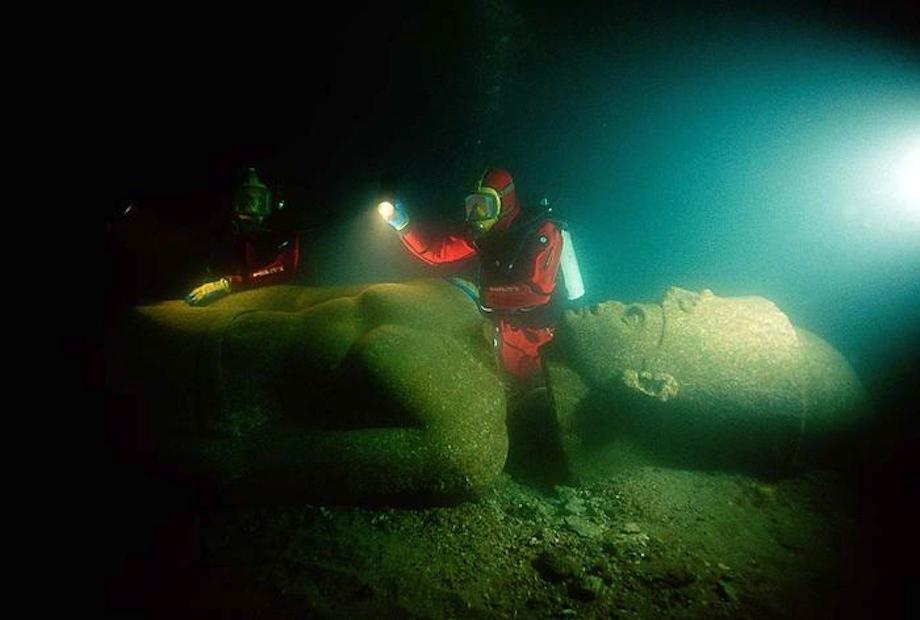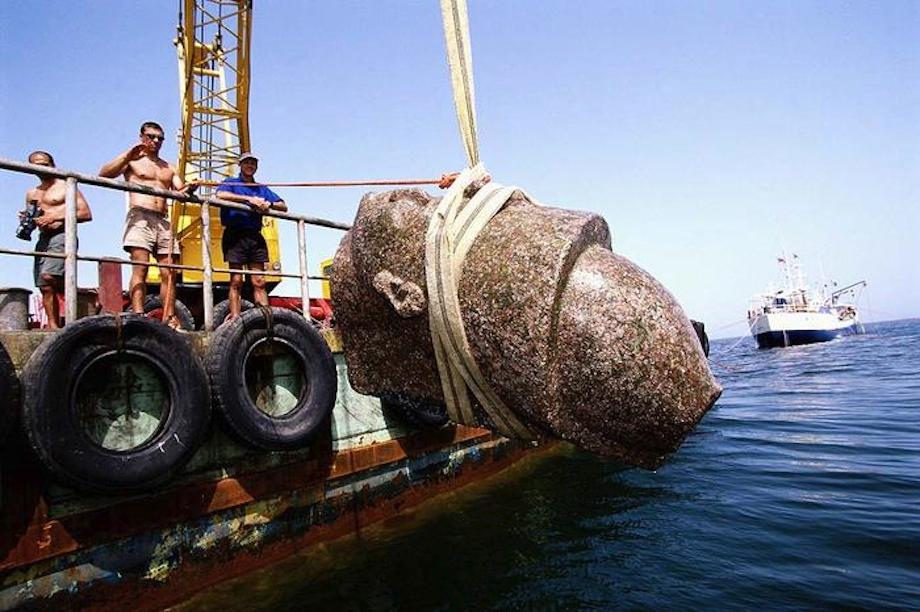( Note: Video and interactive map at link )
Lindsay Murdoch
Published: June 15, 2013 - 12:21AM
Scratched and exhausted, Damian Evans pushed through dense Cambodian jungle into a clearing where mountain villagers long ago attempted to grow rice, stepping onto a weed-covered mound.
"Bingo", the Australian archaeologist said as he picked up and examined an ancient sandstone block. "This is a collapsed temple that was part of a bustling civilisation that existed 1200 years ago . . . it looks like the looters were unaware it was here," he said.
Over the next few hours, Evans and a small group of archaeologists hacked through more landmine-strewn jungle and waded through swollen rivers and bogs to discover the ruins of five other previously unrecorded temples and evidence of ancient canals, dykes and roads, confirming data from revolutionary airborne laser scanning technology called lidar.
The discoveries matched years of archaeological ground research to reveal Mahendraparvata, a lost mediaeval city where people lived on a mist-shrouded mountain called Phnom Kulen, 350 years before the building of the famous Angkor Wat temple complex in north-western Cambodia.
Subsequent searches have identified two dozen more hidden temple sites.
Evans, director of the University of Sydney's archaeological research centre in Cambodia, said the "eureka moment" in the discovery came weeks earlier when the lidar data popped up on a computer screen.
"With this instrument – bang – all of a sudden we saw an immediate picture of an entire city that no one knew existed, which is just remarkable," he said.

[center]A buddha carved into a rock face at an ancient Cambodian city that was discovered using laser technology. Photo: Nick Moir

Heng Heap, a one-legged, chain-smoking former Khmer Rouge soldier, guided the expedition, hacking through the undergrowth and skirting landmines in the area where he knows every significant outcrop, stream and valley.
Injured in three landmine explosions and wearing a prosthetic plastic leg, Heng Heap said he was surprised when the archaeologists, using GPS co-ordinates, pointed him straight to temple sites he never knew existed that were buried or hidden by jungle.
"I knew some things were there but not all of them," he said between puffs of a village-made cigarette.
Fairfax Media recorded the archaeologists pulling away undergrowth at several sites to find pedestals from collapsed temples that were probably looted centuries ago.

Guided by the GPS loaded with the lidar data, they stumbled across piles of ancient bricks. They found two temple sites where no carved rocks or ancient bricks could be found scattered nearby, indicating they have never been looted.
They also found a cave with historically significant carvings that was used by holy hermits who were common during the Angkor period.
Lidar works by firing rapid laser pulses at a landscape with a sensor, measuring the time it takes for each pulse to bounce back. By repeating the process, the technology builds up a complex picture of the terrain it is measuring.
On Phnom Kulen, the data revealed hundreds of mysterious mounds several metres high across the mostly buried city.
One untested theory is that they were tombs where the dead were buried, but there could be many explanations. "We are still trying to work out what these things were," Evans said.
"There may be implications for society today . . . for example, we see from the imagery that the landscape was completely devoid of vegetation," he said.
"One theory we are looking at is that the severe environmental impact of deforestation and the dependence on water management led to the demise of the civilisation . . . Perhaps it became too successful to the point of becoming unmanageable."
For centuries the mountain of Phnom Kulen has remained a holy place where tens of thousands of pilgrims come each year to bath and perform spiritual rites.
Archaeological research of sculptured caves and riverbeds shows the area remained occupied throughout the Angkor period between the 9th and 16th centuries.
But the lidar technology has confirmed that Mahendraparvata was built on Phnom Kulen before Jayavarman II descended from the mountain to build another capital near where Angkor Wat now stands.
"This is where it all began, giving rise to the Angkor civilisation that everyone associates with Angkor Wat," Evans said.
Built over hundreds of square kilometres with a population of hundreds of thousands, possibly a million people, Angkor was the largest low-density, pre-industrial urban complex on the planet, dominating south-east Asia for 600 years.
According to Chinese scholar Zhou Daguan, who recorded life in the then lowland capital between 1294 and 1307, Angkor rulers presided over slave-based civilisations where people went naked to the waist, wrapped only in cloth. They lived in thriving, low-density cities with canals and villages and temples dedicated to a god.
According to ancient scriptures, a Brahmin priest anointed Jayavarman II a "universal monarch" in 802. But little is known about the city he presided over.
Phnom Kulen was covered by jungle for centuries until loggers moved into the area in the 1990s after years of civil war. The area was a former stronghold of the Khmer Rouge, a Maoist-influenced organisation that failed spectacularly in the 1970s to replicate the agricultural achievements of the Angkor period, causing the deaths of more than a million people from overwork or starvation, while hundreds of thousands more were executed.
Heng Heap's village, called Anlong Thom, is in the middle of the discovered city, but none of the 1200 villagers knew it.
David Sandilands, an Australian working in the village for the London-based Archaeological and Development Foundation, said more than half the villagers were malnourished. "It is hard for the Khmers to think about history when they have empty stomachs," he said.
Sandilands is showing the villagers how to grow mushrooms which are highly nutritious and can be sold in markets.
He said the village is a "fractured society" but he hopes they will benefit from intensified archaeological research on the mountain, providing work and additional income. More than 25 villagers are already employed to clear vegetation and protect the mountain's historical sites.
When sites are being excavated in the 37,500-hectare Kulen national park, the Archaeological and Development Foundation employs more than 100 people, mostly local villagers.
However, the work has been restricted by landmines that were laid indiscriminately across the mountain during the war.
Areas around the mountain's known historical sites are thought to have been cleared of the mines but they still pose a risk to archaeologists and villagers.
Now the lidar technology is set to replace the need for explorers and scientists to rely on the machete to clear dense vegetation that covers the remains of civilisations.
The technology was used in 2009 to reveal extensive terraced farming and a road network in the ancient Mayan city of Caracol in the Central American country of Belize. It has also been used recently at Stonehenge and other European archaeological sites.
When Evans learnt of the technology, he helped set up the Khmer Archaeology Lidar Consortium made up of eight organisations including the Archaeological and Development Foundation, Cambodia's APSARA National Authority and the University of Sydney's Robert Christie Research Centre.
The project was a gamble: the technology had never been used for archaeology research in tropical Asia, it would require the broadest co-operation ever among diverse groups of archaeologists from seven nations who are working in Cambodia, and it would cost more than a quarter of a million dollars.
High-level approval had to be sought from the government in Phnom Penh.
The consortium commissioned Indonesian company PT McElhanney to transport a Leica airborne laser scanner to Cambodia.
Over seven days in intense tropical heat, a red helicopter flying at 800 metres methodically criss-crossed 370 square kilometres of remote forested areas of north-western Cambodia.
The instrument collected billions of data points and about 5000 digital aerial photographs that will keep archaeologists busy for years.
Members of the Indiana Jones-like expedition that matched the lidar findings traversed deep rutted goat tracks and knee-deep bogs after travelling high into the mountain on motor bikes.
Everyone involved was sworn to secrecy until the lidar findings were scientifically peer-reviewed.
Evans said it is still not known how large Mahendraparvata was because the lidar search only covered a limited area.
"The network doesn't stop at the edge of the survey area," he said, adding that money is being raised for further research.
"Maybe what we are seeing was not the central part of the city, so there is a lot of work to be done to discover the extent of this civilisation."
Lindsay Murdoch is Fairfax Media's south-east Asia correspondent.
Go online to see footage of the newly found ruins.
This story was found at:
http://www.theage.com.au/world/the-lost-city-20130614-2o9k7.html





